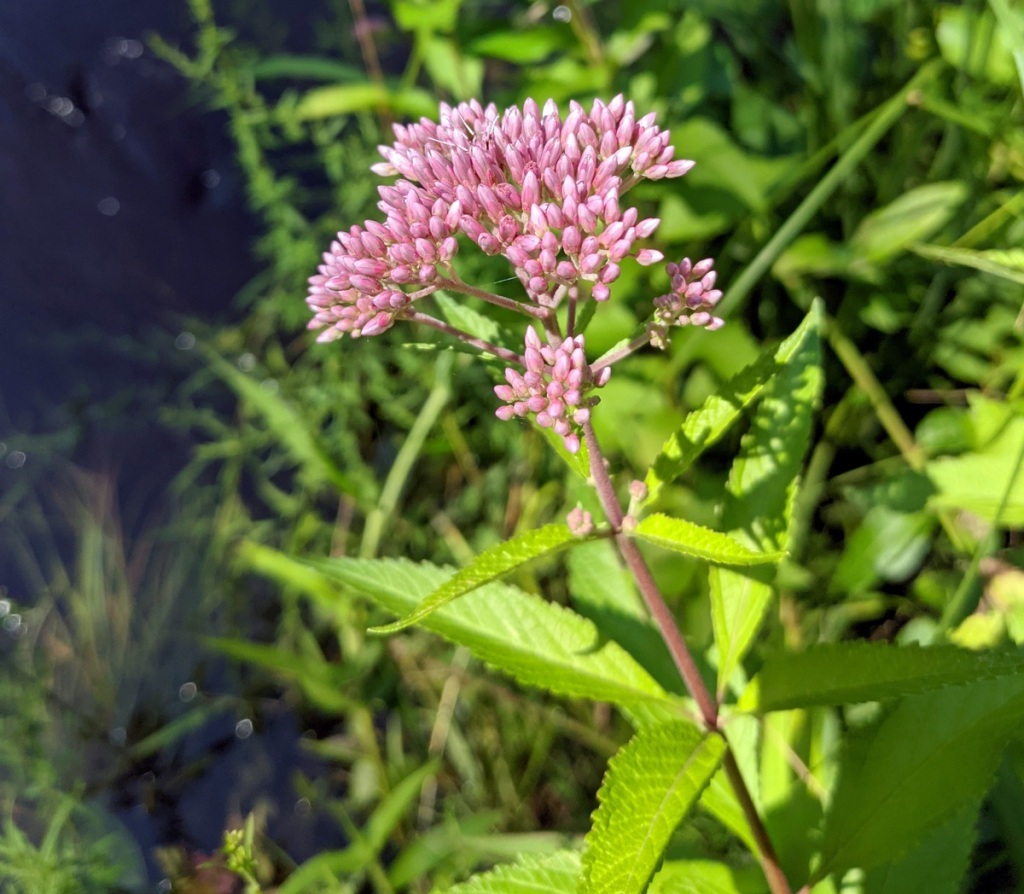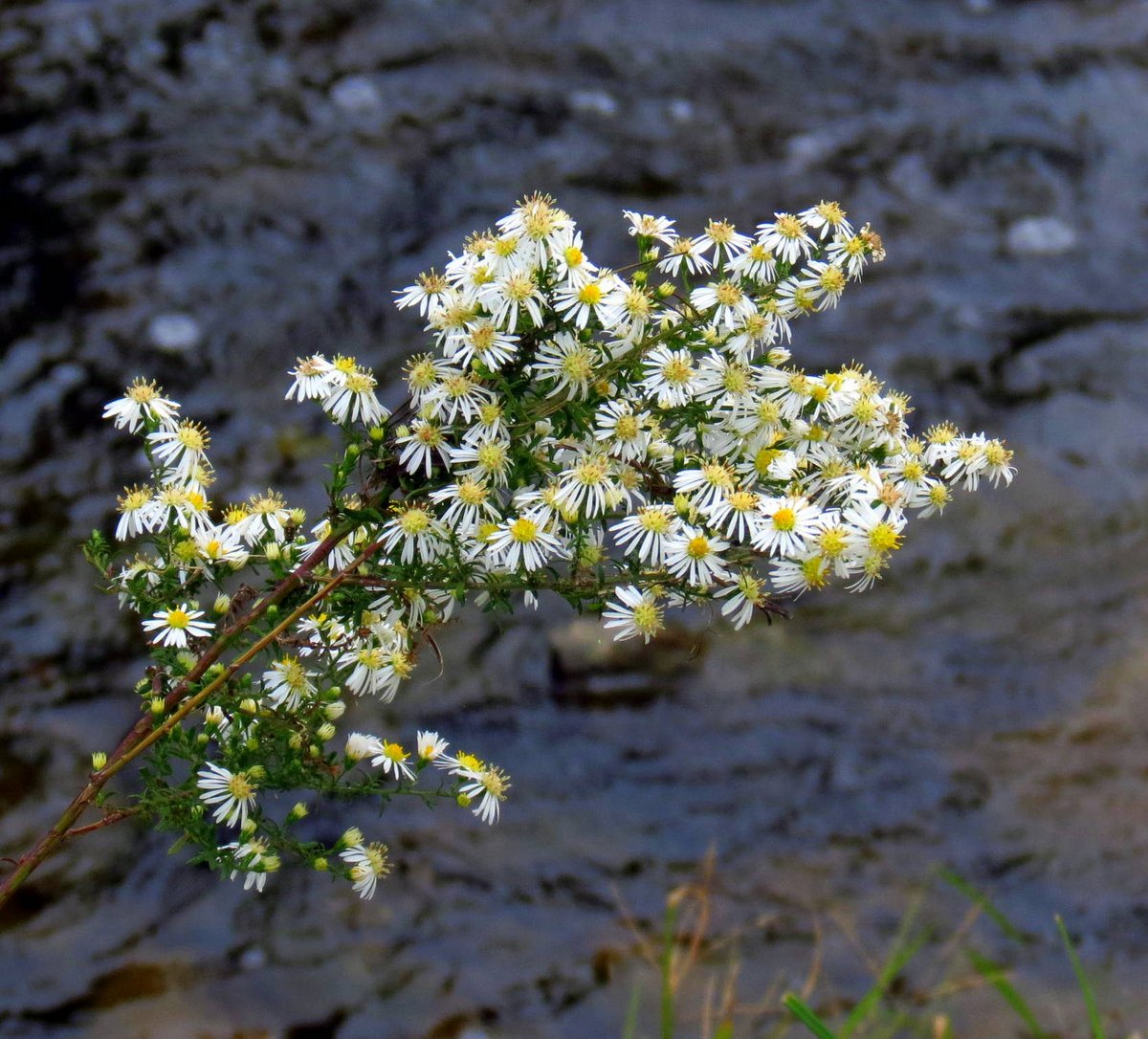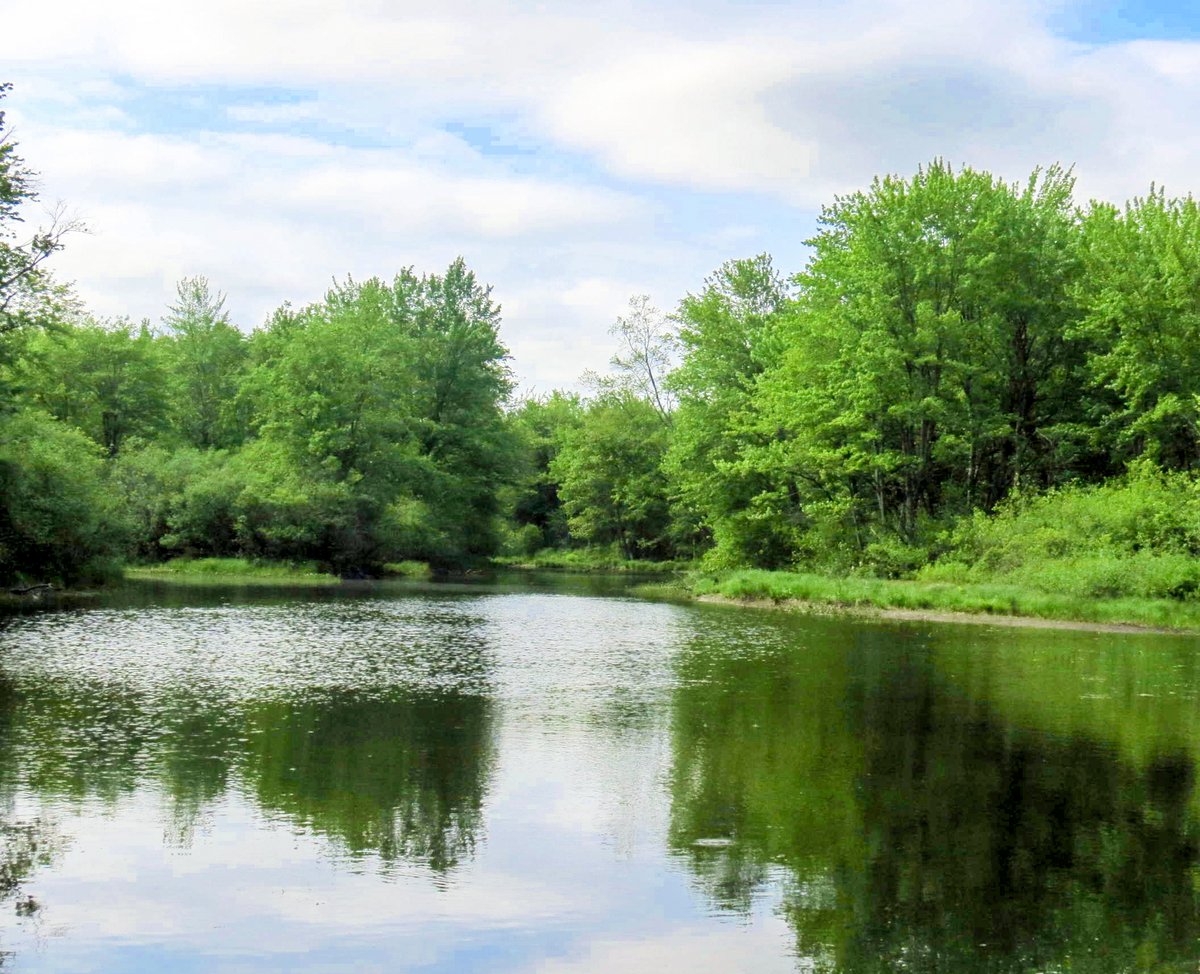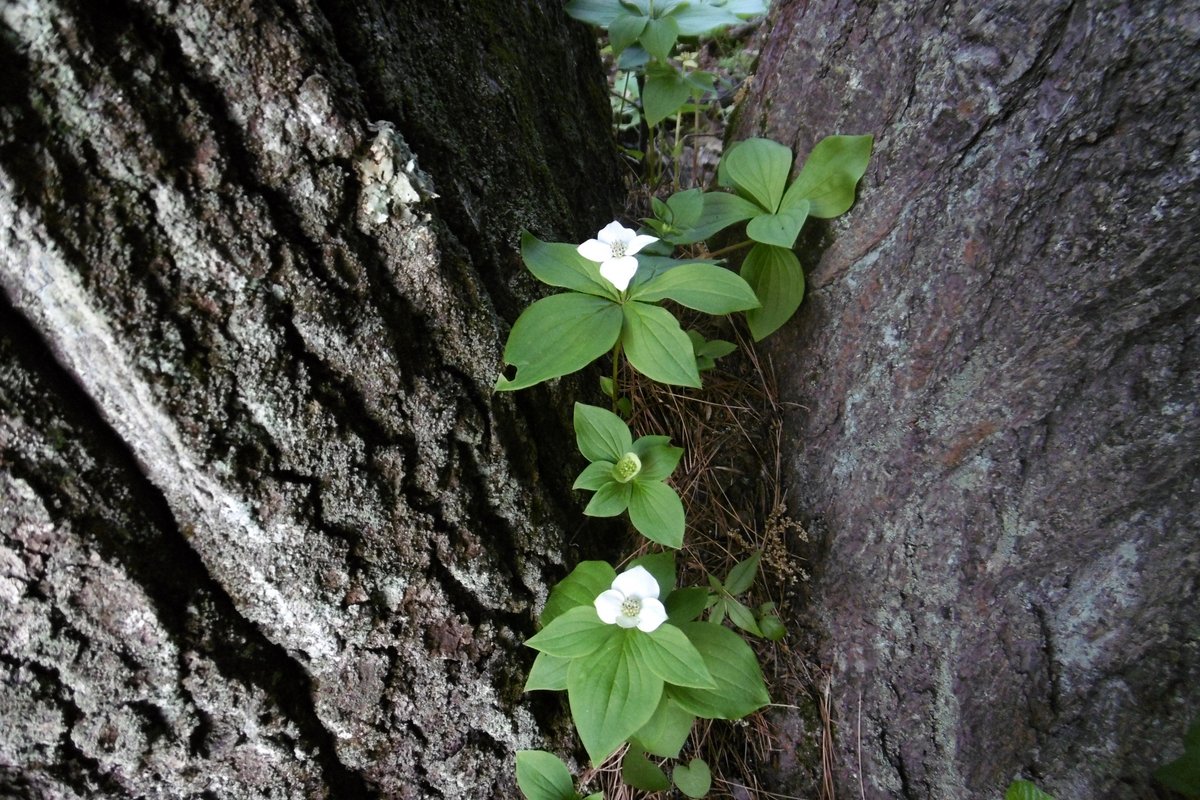
Last Saturday I walked along the Ashuelot River in Keene, hoping to find some marsh bellflowers. As this photo shows, I sure found plenty of pickerel weed (Pontederia cordata.) Beautiful ribbons of it lined the banks. They are probably why I see so many ducks and geese here. Ducks eat the seeds and geese eat the leaves.

The water was about as high as it gets thanks to some very heavy rain throughout the month of July. Another foot or so higher and in places it would have been over the trail.

Luckily most of the trail stays high and dry but I found the side trail I needed to use to see the marsh bellflowers was under about 6 inches of water, so I couldn’t get to them or the mad dog skullcap plants that live there. With my lungs I can’t be falling into rivers. I doubt I could swim ten strokes.

I did see a buttonbush shrub (Cephalanthus occidentalis) up to its neck in water but it was blooming. I know another plant along the river in Swanzey that is sometimes under water when the river is high, but it doesn’t seem to bother it.

The small flowers of tall blue lettuce (Lactuca biennis) are more white than blue this year from what I’ve seen so far. This plant has an odd look, sometimes reaching ten feet tall with flowers hardly bigger than a pencil eraser at the very top. Luckily this flower was just about at eye level, because the stalks of this plant don’t take kindly to being bent. They’ll often snap right in two.

I’ve seen thousands of Joe Pye weed (Eutrochium purpureum) buds this year but not a single flower yet. That’s okay with me though, because I’ve always thought the buds were as pretty as the flowers. They seem to have a deeper color.

There is a bumper crop of blueberries this year. The bushes are loaded with berries anywhere I go so all the critters will be happy. I’ve noticed that the birds aren’t paying much attention to them yet though.

Fringed loosestrife (Lysimachia ciliata) grew here and there but it doesn’t seem to be doing well along this trail this year. The plants looked a bit weak and kind of ragged.

I saw quite a lot of Indian cucumber root (Medeola virginiana) plants along the trail but this was the only one I saw with fruit. After a time these green berries will become deep, purple-black. And then they’ll disappear. I think turkeys get them before anyone else. A good healthy plant can stand just about as tall as a turkey’s eye is from the ground.

As I say every year; spring and fall begin on the forest floor. This Indian cucumber root illustrates what I mean.

“But it’s only August,” you say. “Surely the Indian cucumber root was a fluke?” Unfortunately, that argument can’t stand; this tall meadow rue (Thalictrum pubescens) also whispered hints of fall.

And so did this sarsaparilla (Aralia nudicaulis.) Soon all of the squirrels and chipmunks will be gathering their nuts and seeds. Who needs a calendar?

I couldn’t decide which was prettier, this royal fern or its shadow, so I took a photo of both.

A depression in the woods was filled with water but the water had a strange cloudy film on it. I don’t think I’ve ever seen this before and I can’t imagine what caused it, way off in the woods like it was. It wasn’t oily and it didn’t look like dust. I thought of mushroom spores but it would have taken a lot of mushrooms to do this.

Clubmosses also release spores that float on water but not this one. It looked like it was finished. An interesting thing about clubmoss spores is how, if you fill a glass with water and cover the surface of the water with spores, when you stick your finger in the water and pull it out again it will be covered in spores but will be perfectly dry. Clubmoss spores are waxy and hydrophobic, which means resistant to water. They are also extremely flammable, and once made up the flash powder used to create the flash photographers used to take a photo.

The oak tree that the beavers girdled is done. I don’t know why beavers do this to trees and then leave them standing. After all, the succulent buds and branches are a big reason why they cut trees.

There won’t be any buds on this tree, and the branches will be dry. There wasn’t a leaf on them. Soon the dead branches will begin to fall, and they’re right above the trail.

It’s really too bad that beavers don’t eat Canada mayflowers, because there are many thousands of them on the floor of any forest I visit. They’re a native plant but they act like an invasive plant by creating monocultures that keep other plants from growing. I’ve seen huge stands of nothing but Canada mayflower. And may heaven help you if they get into your garden. Those speckled berries will be bright red and ripe soon, and they’ll disappear quickly.

The closed or bottle gentians (Gentiana linearis) that grow in one spot along the trail looked to be in good shape. Narrow leaf and closed gentian flowers look identical, so you have to look at the leaves carefully to tell the difference. Closed gentian leaves are wider and have a different overall shape than those of narrow leaf gentian. This plant is relatively rare in this area.

And there was the bridge. It crosses what is usually a small stream but on this day the water was licking at its sides. The water level in the river hasn’t dropped much and we’ve had more rain since that day, so I hope it hasn’t washed away.

This photo from last year shows the marsh bellflower (Campanula aparinoides) I came to see. I hoped to get some better shots of the flowers but that probably won’t happen this year without a boat, because it just keeps on raining. Luckily this plant is a perennial so unless the entire riverbank where it grows washes away, I should be able to find it next year. I can’t say how rare it is but I’ve never seen it anywhere but here in this one spot, and I’ve been walking these riverbanks for over 50 years.
Pleasure is spread through the earth in stray gifts to be claimed by whoever shall find them. ~William Wordsworth
Thanks for stopping in.






















































































































































